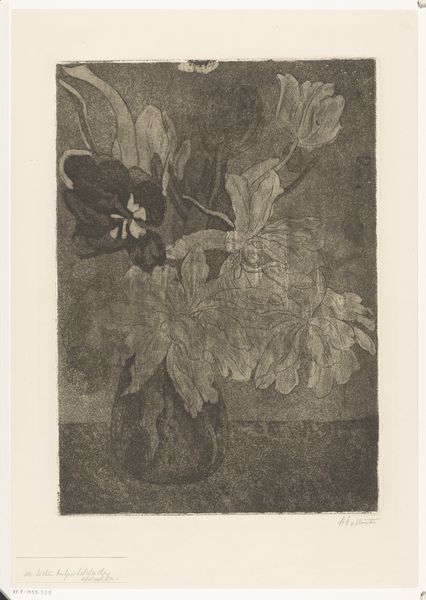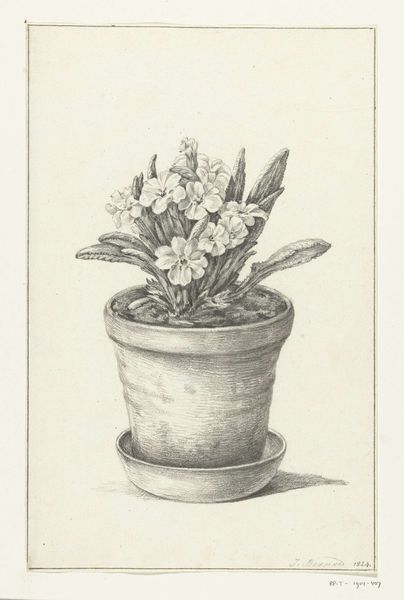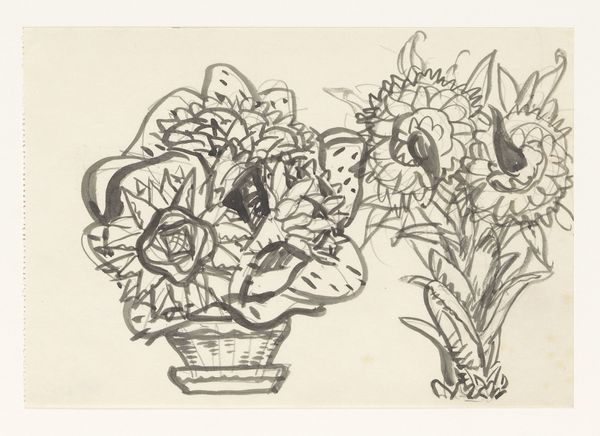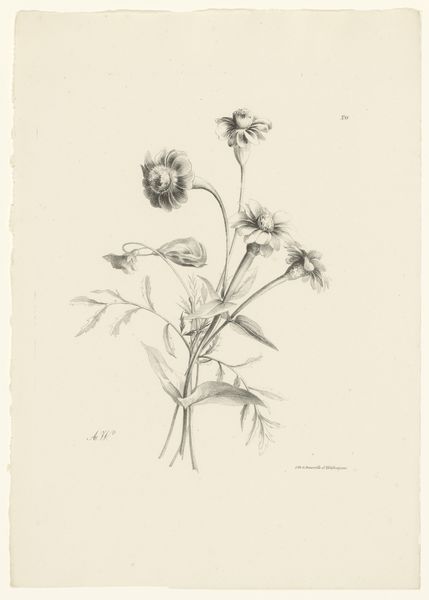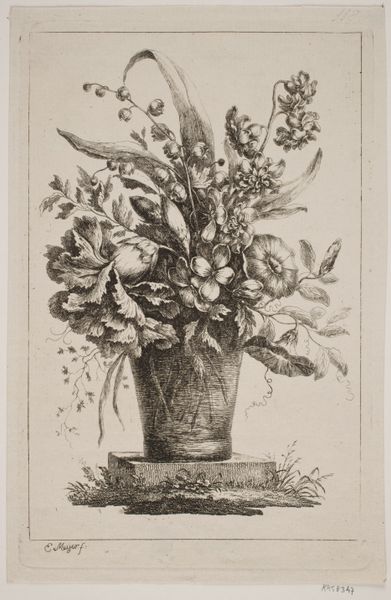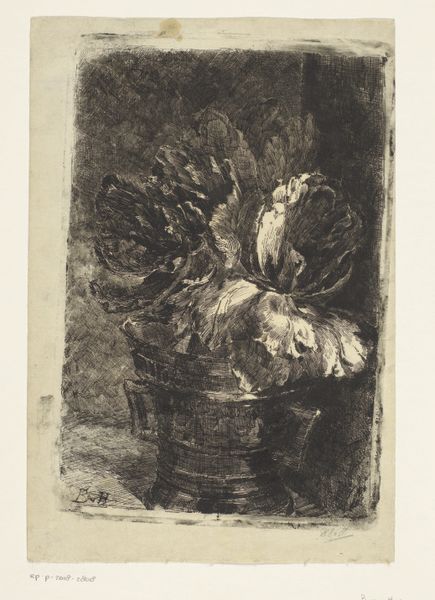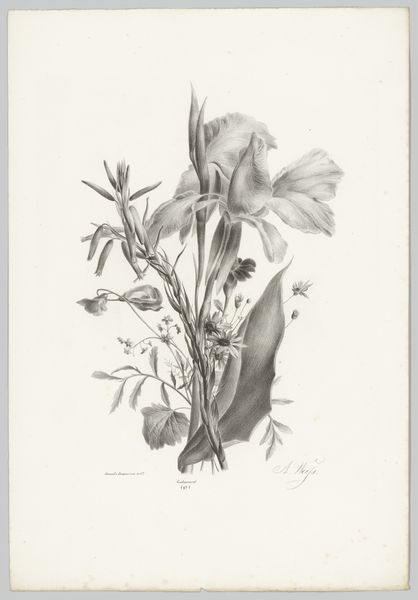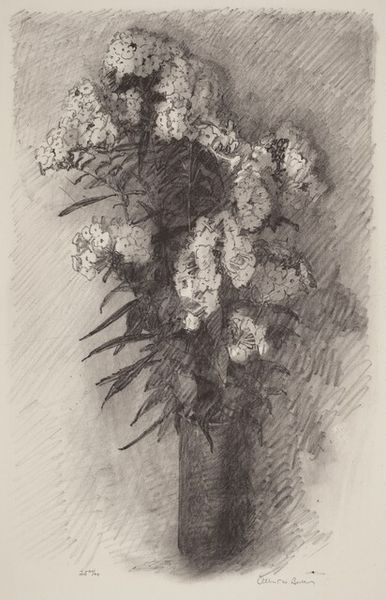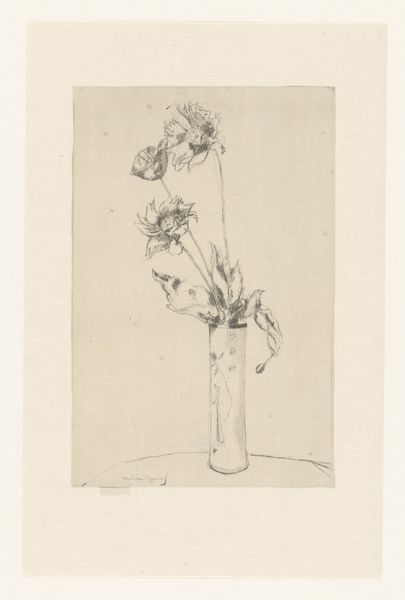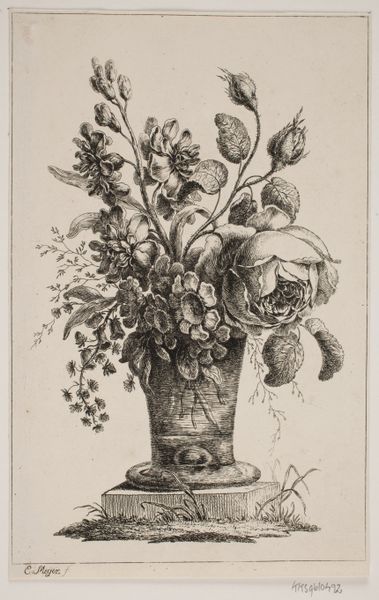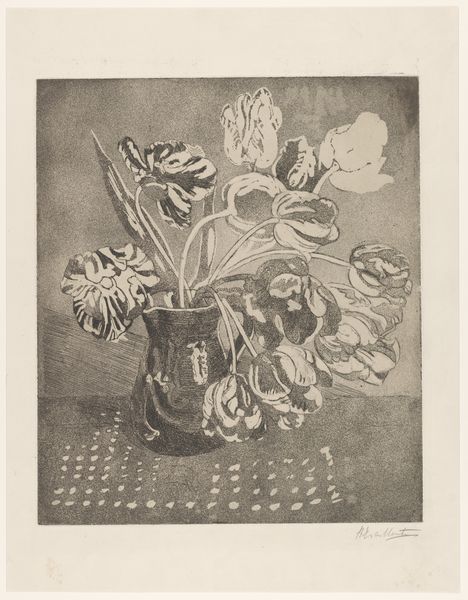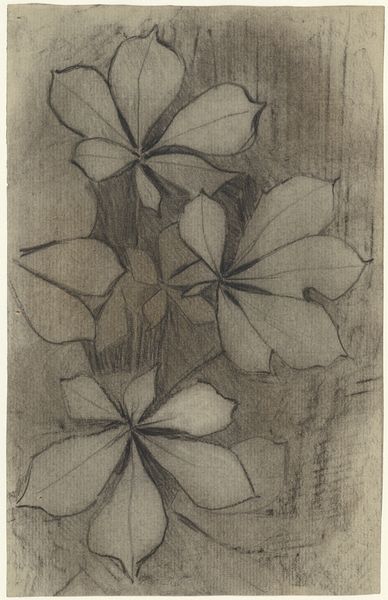
drawing, paper, ink
#
drawing
#
ink drawing
#
etching
#
paper
#
ink
#
line
Dimensions: 322 mm (height) x 249 mm (width) (bladmaal), 348 mm (height) x 278 mm (width) (brutto)
Curator: Welcome. Today, we're exploring Christian Kongstad Petersen's 1909 ink drawing, "Urtepotte med primula," which translates to "Flowerpot with Primula," held here at the SMK. Editor: Immediately striking! There’s a melancholy to this, a stark beauty in the humble scene. The high contrast accentuates the dark shadows around the pot, which adds a certain mood. Curator: Let’s delve into how that mood is achieved. The artist primarily employed ink on paper, and this work presents itself in a straightforward, no-frills presentation. The mark-making itself – cross-hatching, short, repeated lines – creates tonal variation without reliance on color. Think about how that laborious process impacts the viewing. Editor: I'm interested in what the choice of primula signifies. Beyond their commonness, primulas are often seen as symbols of youth and new beginnings, even of hidden secrets due to their name which relates to 'prime' or 'first'. Curator: Fascinating perspective! Given that the artwork was made in 1909, at a moment of artistic shifts towards more stripped-back, representational strategies, there's something about the plant existing in a simple pot which is important to remember. It grounds us in an appreciation for how daily labor went into arranging interior spaces in bourgeois homes at that moment. Editor: I agree, that domestic tension really is held by the object; it adds another layer to its interpretation, complicating this symbol of rebirth. Is it also commenting on something ephemeral within domestic tranquility? The artist using a modest, accessible drawing and printing technique really creates an almost universal image. Curator: You've touched on a central paradox. Its visual language suggests accessibility and simplicity, echoing both the means of its production, but your observation of its darker psychological complexity reminds us to consider more nuanced interpretations of mundane representations. Editor: Precisely! It's a testament to how deeply ingrained even the smallest details can become, both consciously and unconsciously shaping our collective memory. Curator: A very fitting remark on this subtle, powerful work that rewards closer consideration. Thank you. Editor: Indeed. It gives you something to chew on, that’s for sure.
Comments
No comments
Be the first to comment and join the conversation on the ultimate creative platform.
